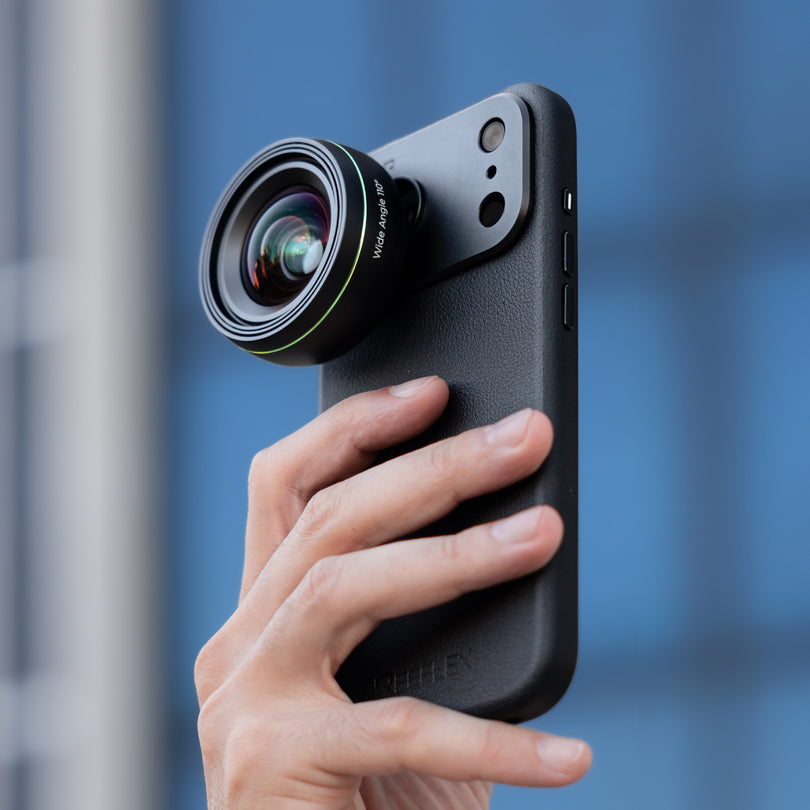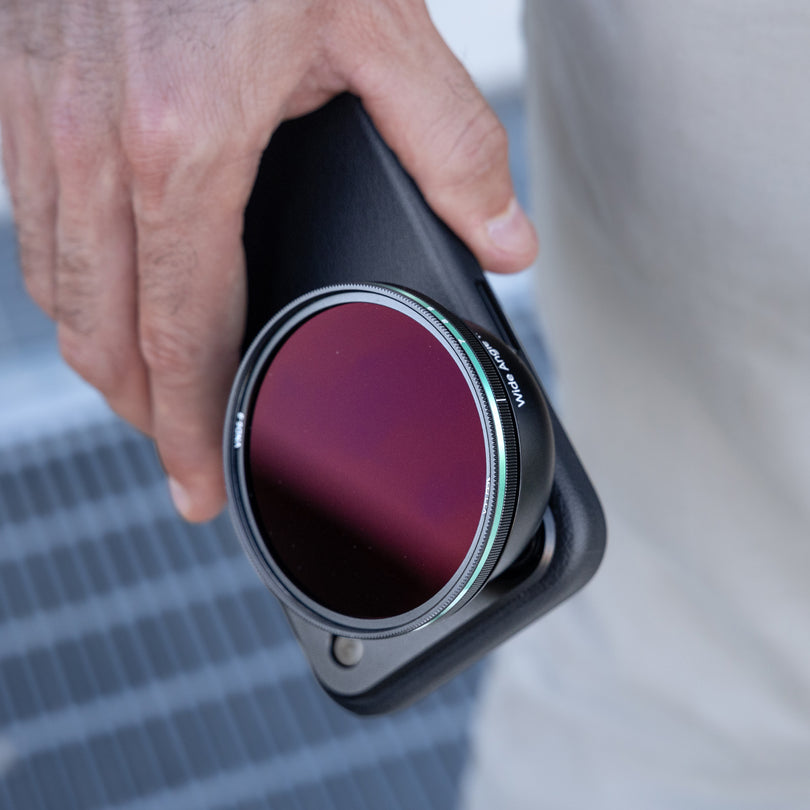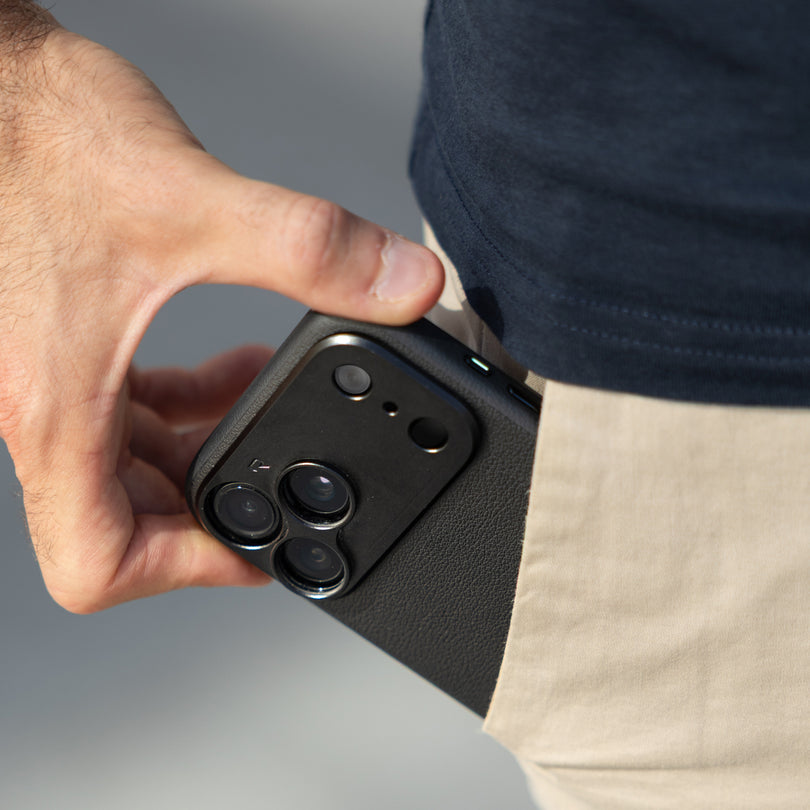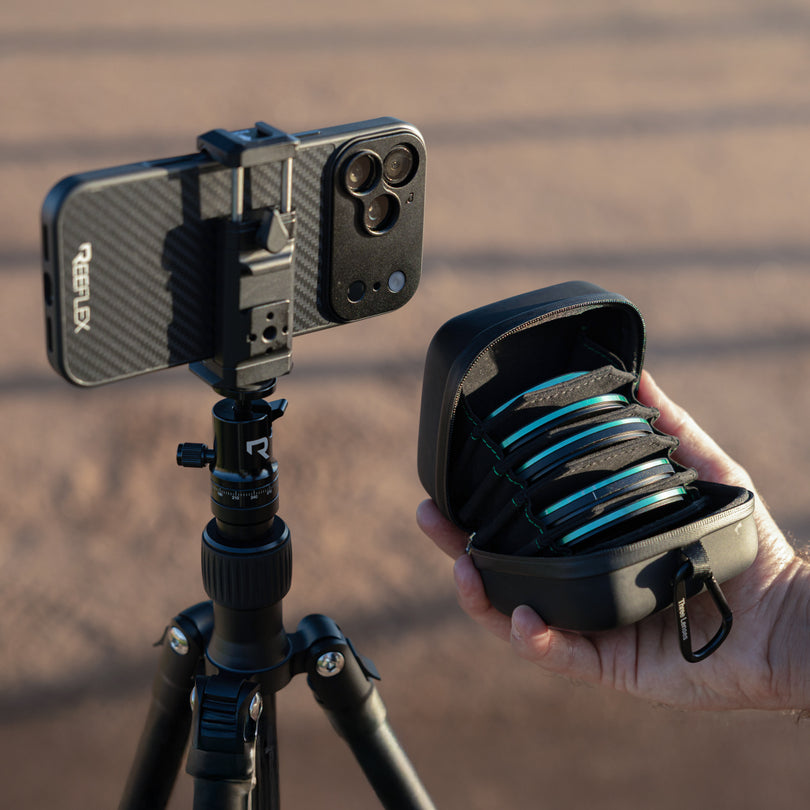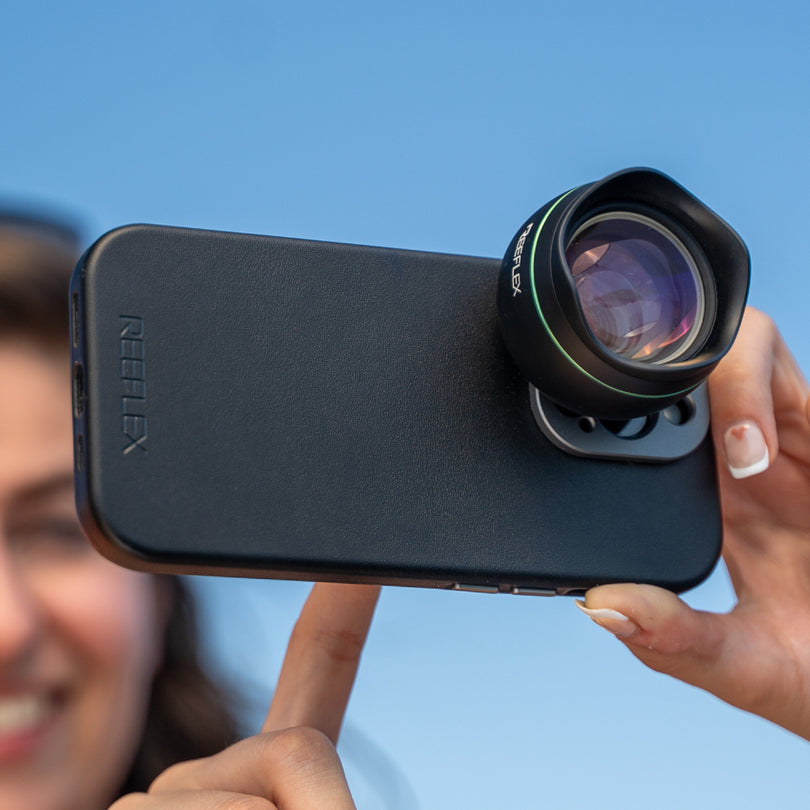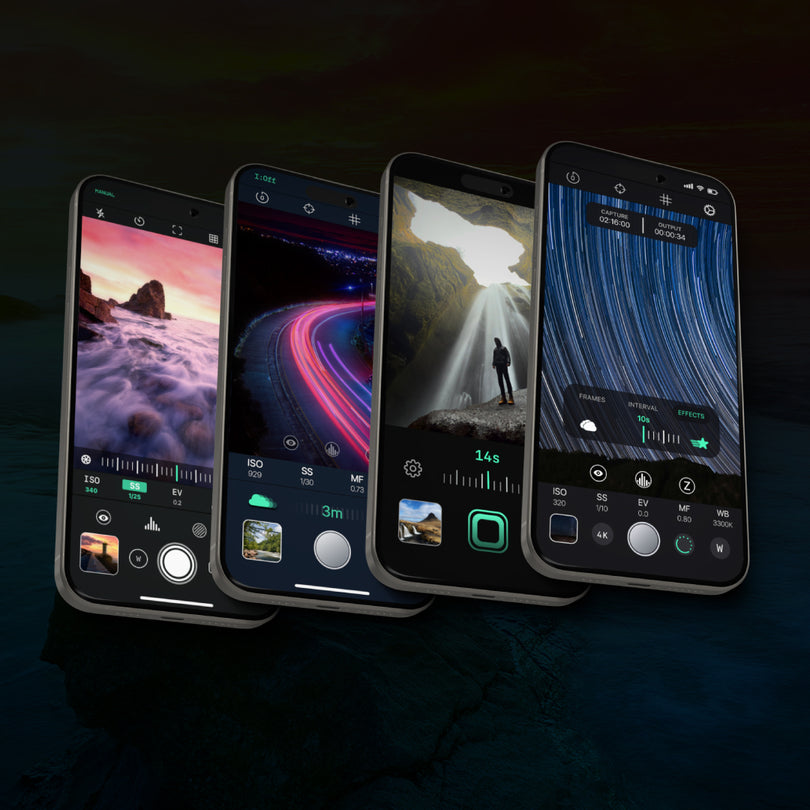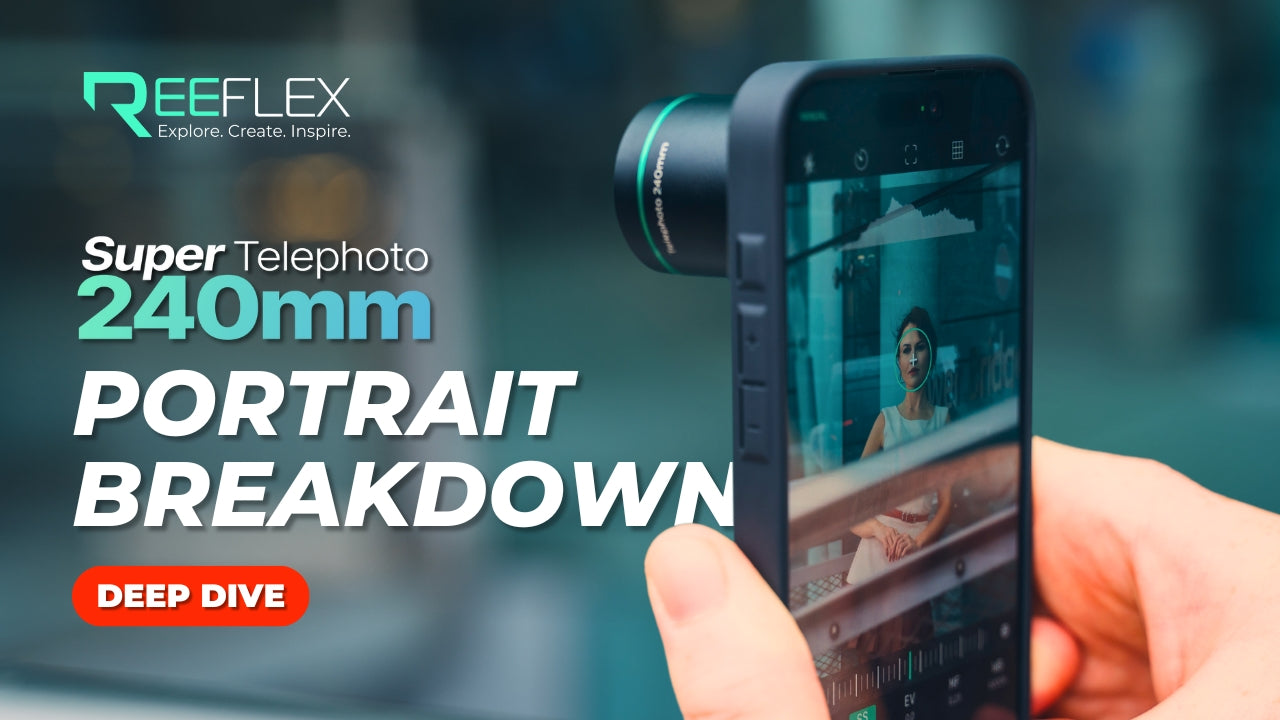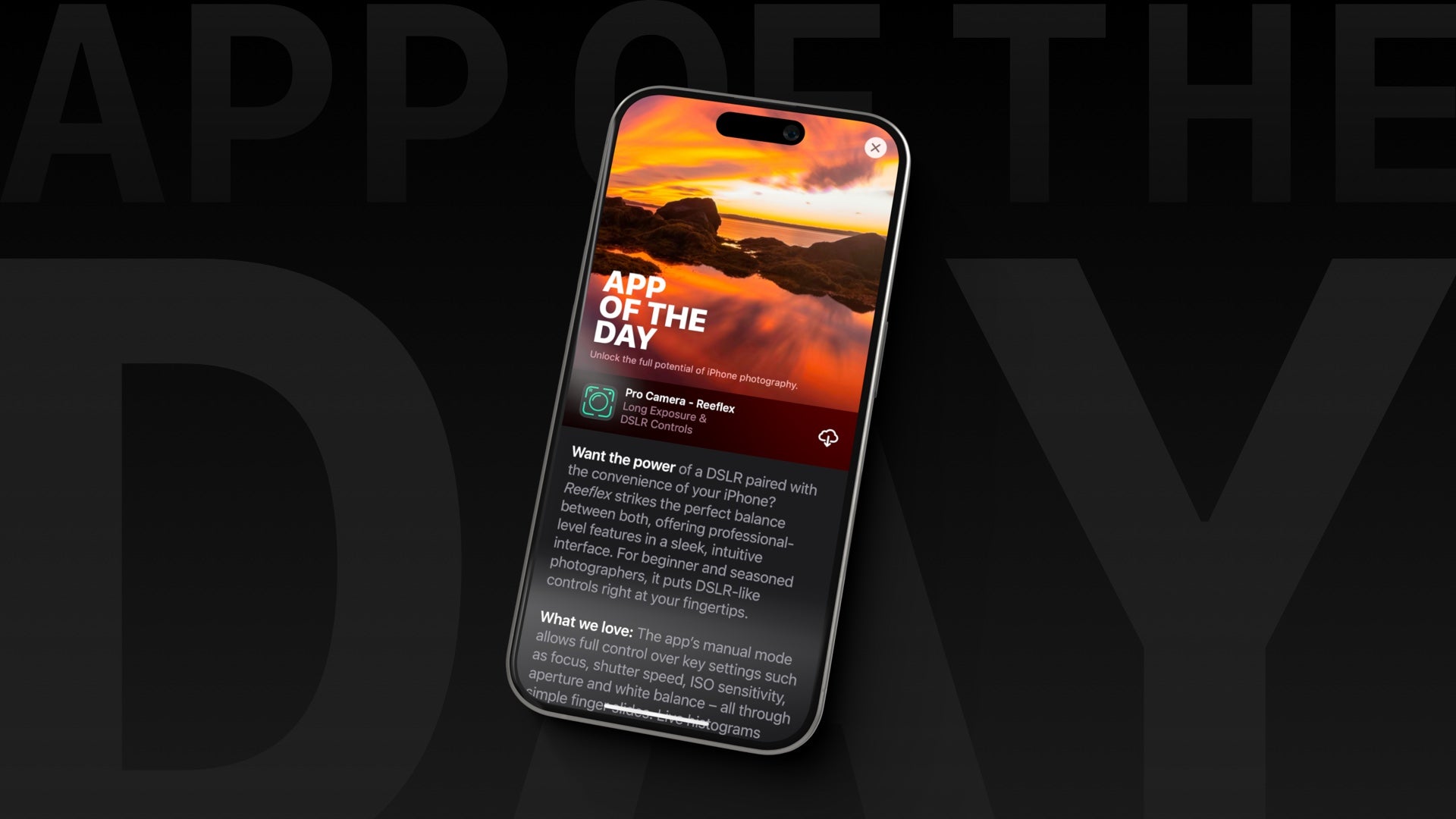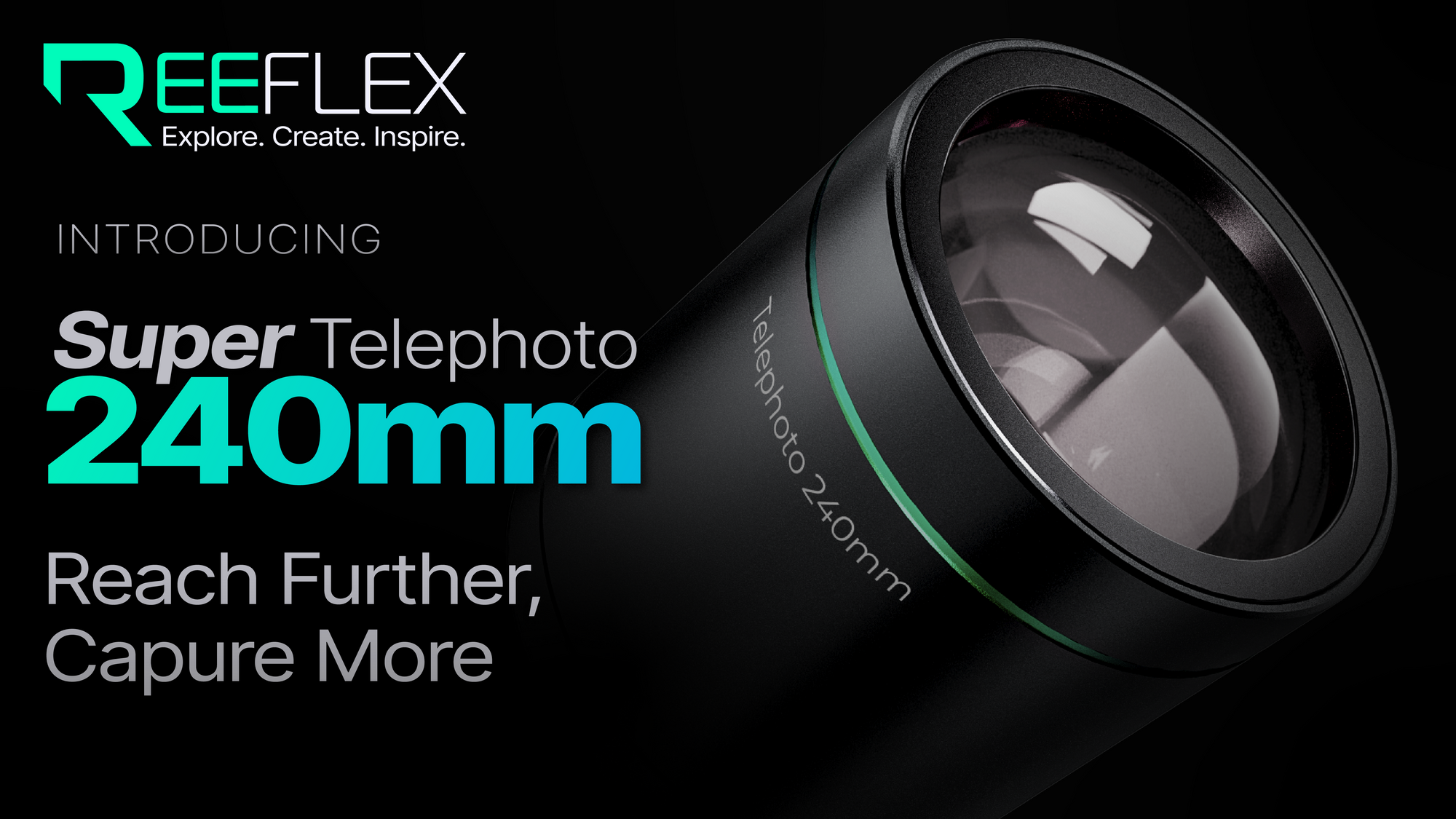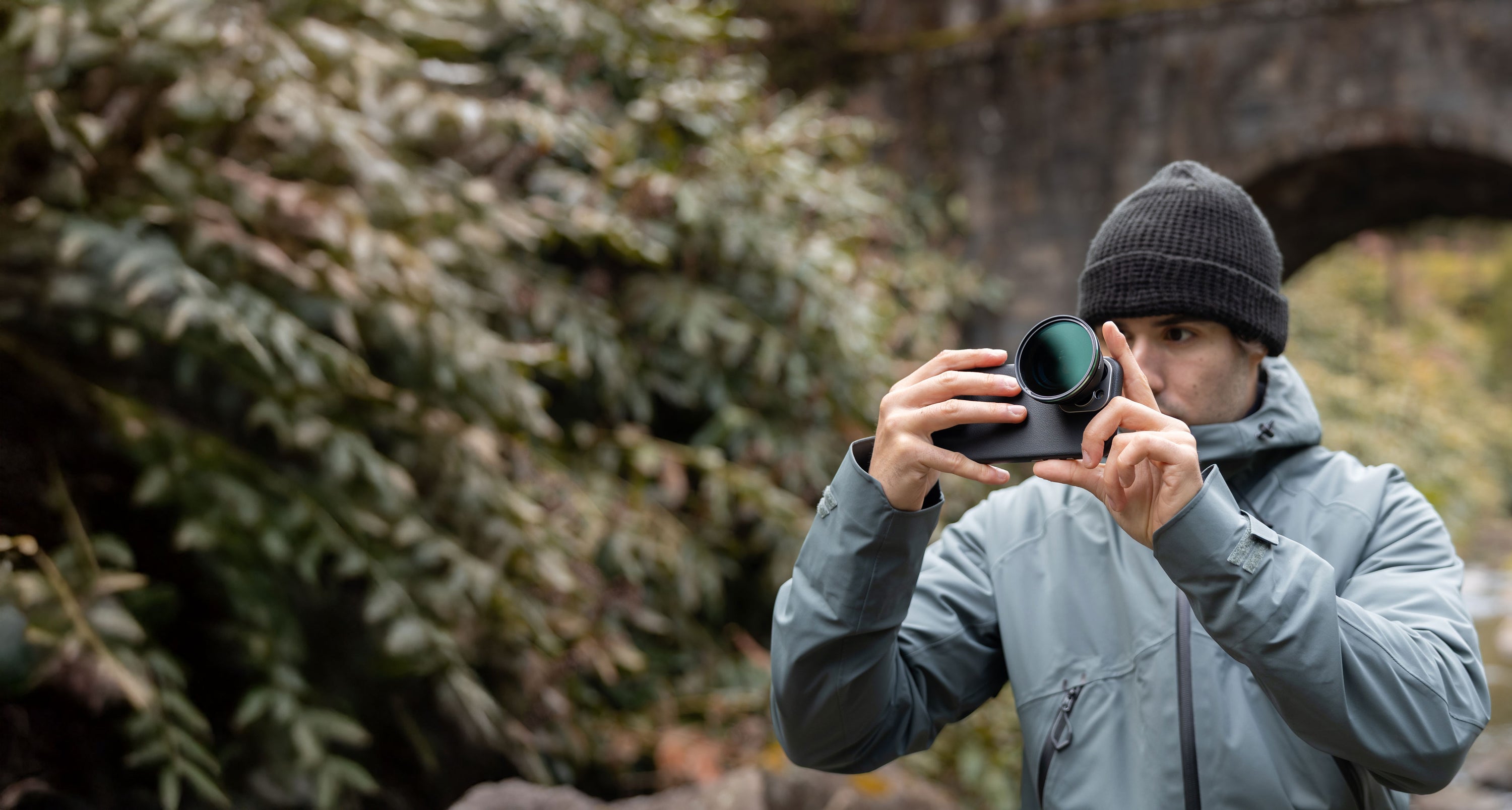Hi everyone, In this breakdown, we’re diving into a portrait captured using the new 240mm Super Telephoto Lens. I’ll address some common questions about auto-focus, handheld stability, and the 12 MP resolution. If you’ve already backed the Super Telephoto on Kickstarter, this should get you even more excited about what’s possible with this lens.
Info
Device: iPhone 16 Pro
App: Reeflex Pro Camera App
Camera: 5x Telephoto + 240mm Super Telephoto lens
Format: Bayer RAW (Real RAW, not ProRAW)
Settings: ISO 40 | f/2.8 | 1/120

Pin-Sharp Focus – No Tripod Needed
Hopefully, this screenshot and the screen recordings in the videos I’ve made quiet any mumblings that the Super Telephoto images being shared are fake!
Note the use of the focus reticle around the eyes. Your phone’s auto-focus continues working perfectly with the Super Telephoto lens attached, which is fantastic news for portrait photographers who are constantly on the move, as you follow your subject posing. I’ve also demonstrated this with the motocross and paragliding images and screen recordings previously shared.
Breaking the Reciprocal Rule with Stability
Another noteworthy detail is the shutter speed: 1/120. According to the traditional “reciprocal rule,” the shutter speed should match the focal length to avoid blur when shooting handheld. With a 240mm focal length, I should have set the shutter speed to at least 1/240. Yet, as you can see, the image remains razor-sharp.
This is because the Super Telephoto takes advantage of the iPhone 16 Pro’s 3D sensor-shift optical image stabilisation, which is the same stabilisation technology found in the 15 and 16 Pro Max models. This means even when breaking the traditional rules of photography, the Super Telephoto still delivers impeccable sharpness when shooting handheld.
Unedited RAW File and Exposure

Here’s the unedited RAW file. Look at the fine details in Marta’s jumper, the beautiful bokeh, and yes - it’s 1-stop over-exposed because of my slow shutter speed. Had I followed the rule and sped it up to 1/240, the shot would have been more optimally exposed straight out of the camera, as demonstrated in the corrected example below.

Shooting in RAW allows me to easily correct the overexposure by bringing the exposure slider down by 1-stop. With the exposure corrected, you can better appreciate the bokeh and cinematic compression. This compression allowed me to frame her with the tree in the background and the handrail in the foreground.
12 Megapixels

Here’s a 100% zoomed crop of the image. There have been some concerns about the Super Telephoto being limited to 12 MP, but it’s important to understand that resolution isn’t everything - especially on smaller sensors like those in smartphones.
In fact, 12 MP is considered the “sweet spot” between resolution, image quality, and low-light performance. Even high-end cameras, like the acclaimed SONY A7SIII, use 12MP sensors, the results of which can be cropped and printed up to 14x20 inches (355x508mm) without losing clarity.

For those still worried about the resolution, here’s a 200% zoom crop that should ease your concerns as the level of detail remains excellent.
Final Edits - No Photoshop Required

I edited the image entirely in Lightroom Mobile on the iPhone 16 Pro itself. In my final edit, the focus was on lifting the shadows on Marta’s face to make her more vibrant and bringing out the overall warmth of the image.

To smoothen the skin, I used Lightroom’s masking tool to reduce clarity and texture specifically on her face. This was on top of clarity and texture reductions to the overall image.

Conclusion
I hope you’ve enjoyed this breakdown and have a clearer understanding of what the 240mm Super Telephoto Lens can achieve. Whether it’s remaining sharp without a tripod, auto-focus, handheld stabilisation or resolution, the lens is a real game-changer for mobile photography.
If you’re still on the fence about backing the lens, I hope this portrait breakdown gives you even more confidence in what the Super Telephoto Lens is capable of. For those who have already backed it, thank you! Your support makes the lens’s production possible. Get ready to capture portraits, wildlife, action, architecture, events and more with a reach and level of quality you didn’t think was possible on a phone.
David Addison
@David_Addison



